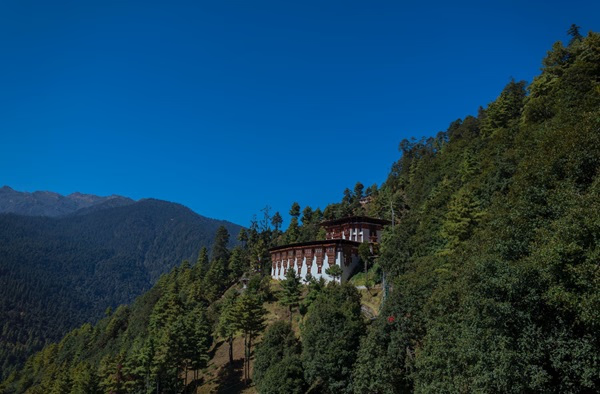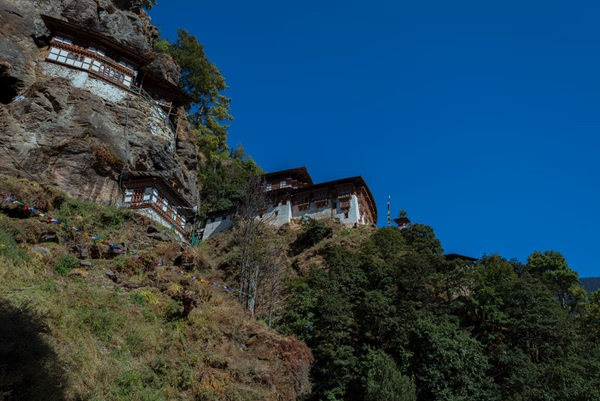Tango Goemba is a Buddhist monastery situated near the scenic Cheri Mountains in Bhutan. The monastery is just 9 miles (14 km) north of the country’s capital city, Thimphu. Tango Goemba has a rich history and is one of the highest Buddhist learning centres in Bhutan. A vast majority of religious leaders — locally known as Je Khenpo —in the country have gone through a nine-year training program at this particular monastery.

History of Tango Goempa
Tango Goemba has been in existence for hundreds of years. The monastery was founded in the 12th century by Phajo Drugom Zhigpo. The monastery was, however, constructed to its current form by the Temporal Ruler, Tenzin Rabgye in 1688. Lama Zhabdrung Ngawang Namgyal paid a visit to the Tango Goemba in 1616. The Tibetan was a descendant of Lama Drukpa Kunley (popularly known as the ‘divine madman’). He is said to have introduced the Drukpa Kagyupa school of Buddhism in Bhutan.
Religious Significance
Deified in the monastery is the self-emanated manifestation of the vengeful Hayagriva. The name ‘Tango’ translates to ‘horse head’ in Bhutanese. Bhutanese religious leaders, Je Khenpo, are taught at the Tango Goemba. After completing their training, the monks spend 3 years, 3 months, and 3 days at the nearby Cheri Goemba retreat. It was during his visit to the Cheri Goemba that PhajoDrugomZhigpo, one of the founders of the teachings of Dodeyna heard neighs coming from the direction of the monastery.
At the same time, he observed a Hayagriva or ‘horse head’ surrounded by a blaze (which is believed to be the manifestation of god Tandin). The self-emanation of the wrathful horse head or Hayagriva is prophesied in Tibet. That’s the origin of the monastery’s religious significance. Many local legends consider the Tango Goemba a holy place. Ngawang Tenzin is said to have acclaimed the divine nature of Tango Goemba.
Festivals Held at Tango Monastery
One of the many important festivals held in the monastery is the Yarney, a monk summer retreat held on the 15th day of the 6th month of the Bhutanese calendar. The ‘Yarney’ is a festival for the monks and loosely translates to ‘a summer stay.’ During the festival, the monks wear the ceremonial yellow robes and observe the strictest monastic disciplines and special vows. The Yarney festival lasts for one and a half months.
Architecture of Tango Goemba
The Tango Goemba has a prominent main tower with recesses. The outside wall has a characteristic curved (semi-circular) wall. The structure is built in a Dzong fashion. The site of the monastery used to be a cave where saints performed miracles and other religious activities such as meditation. The monastery covers these caves, and you will find engraved slates behind the prayer wheels inside the monastery. Just outside the Tango Goemba is a courtyard with a gallery with illustrations of the leaders of the Drukpa Kagyupa lineage.
Temples Inside Tango Monastery
Gyalse Tenzin Rabgyein directed the construction of the 12-cornered monastery. The structure was built within a period of two months. The Tango Goemba has six temples in total, including Trulku Lhakhang, Longku Lhakhang, Choeku Lhakhang, Guru Lhakhang, Namsey Lhakhang, and Gonkhang. The statues in each of these temples are made of gold and copper. The monastery, which is currently under renovation, has three floors.
